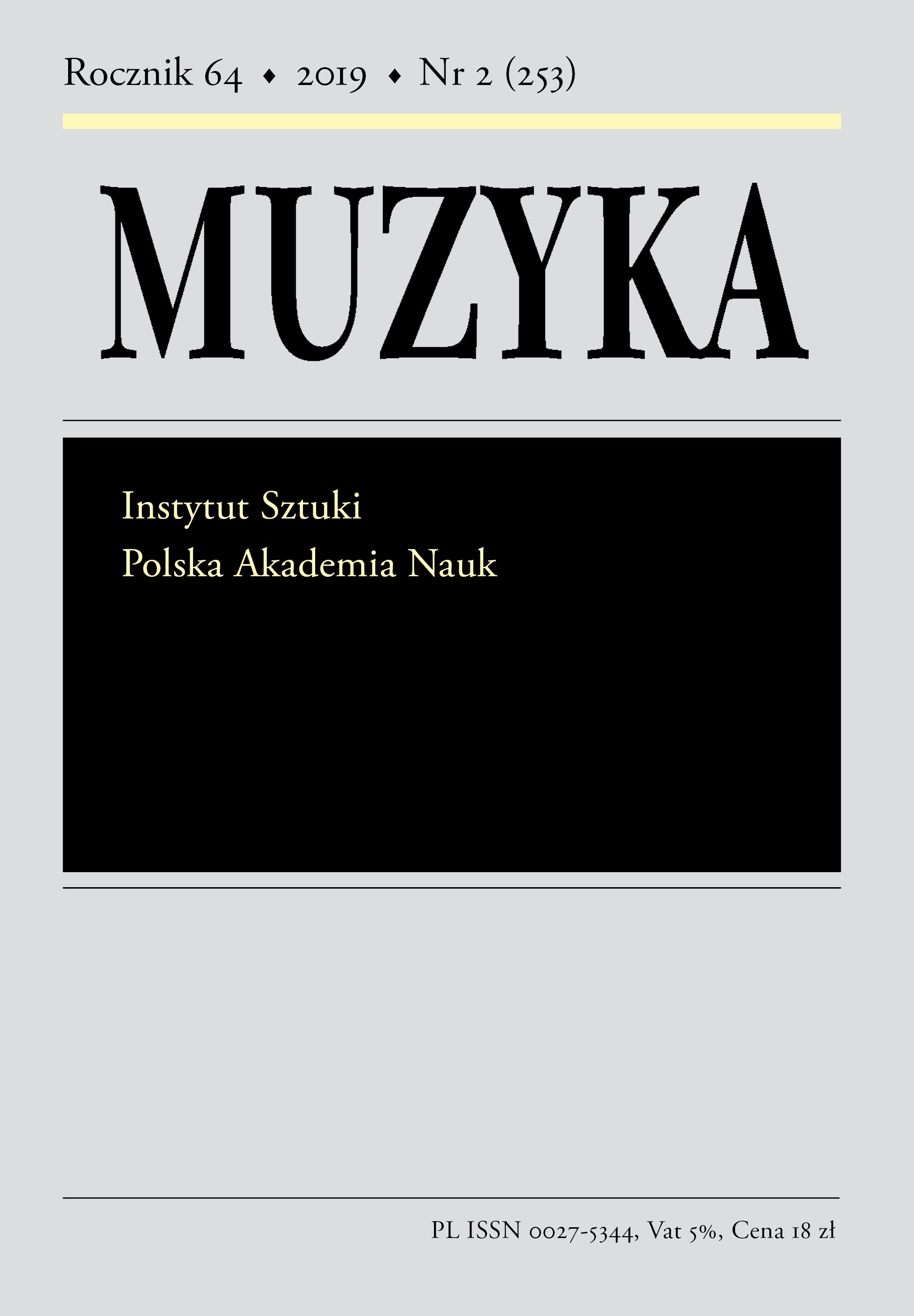Rekonstrukcja XIX-wiecznej mapy muzycznych tradycji polskojęzycznych Ewangelików
Reconstructing the map of 19th-century music traditions among Polish-speaking Protestants
Author(s): Arleta Nawrocka-WysockaSubject(s): Music
Published by: Instytut Sztuki Polskiej Akademii Nauk
Keywords: protestantism; hymnbook (cantionale); Lutherans; Lutheran chorale; Prussian Masuria; Cieszyn Silesia; 19th-century music
Summary/Abstract: The category of the frontier is very helpful and popular in the study of the Polish Protestant music traditions. Owing to their geographic location and political dependencies, these communities – though striving to cultivate their local traditions – were under the strong influence of official culture. The map of Polish 19th-century Protestant music traditions shows many such communities, though several of them later disintegrated and disappeared. On the basis of most recent research undertaken by historians, ethnographers and specialists in religious studies, as well as information collected during source surveys, theauthor attempts to draw a map of Polish 19th-century Protestant traditions. Apart from well-known communities, such as those found in the Těšín (Pol. Cieszyn) region in Silesia and in Masuria (part of Prussia at that time), the map also includes Western Pomerania(the so-called Slowinzen in German, Słowińcy in Polish), the ‘forgotten folk’ of southernGreater Poland, the Protestants of the Lower and Upper Silesia, as well as of the (Congress)Kingdom of Poland. The article discusses such issues as the interpenetration of nationalcultures (especially German and Czech with the local one), mutual influences amongthe widely scattered Protestant communities, and the perception of those communitiesby the clergy and by the Church authorities. Music traditions are understood here as thecustoms that accompany religious song performances and the repertoire promoted in thelocal hymnbooks. I discuss these topics (as well as local performance styles) in very generalterms, since a detailed analysis of the hymnbook contents and comparison of the preserved(notated) melodies calls for a separate study. The sources have been preserved to a differentextent in different places, which makes a precise reconstruction of the map of traditionslargely impossible. What this paper therefore attempts to do is to provide a synthetic pictureof the various Lutheran communities, their universal as well as specifically local qualities.
Journal: Muzyka
- Issue Year: 64/2019
- Issue No: 2
- Page Range: 70-88
- Page Count: 19
- Language: Polish

